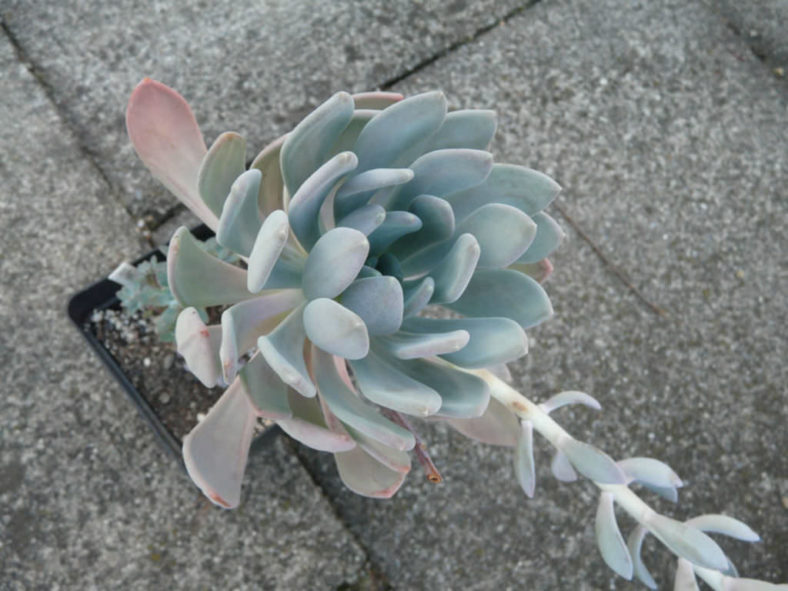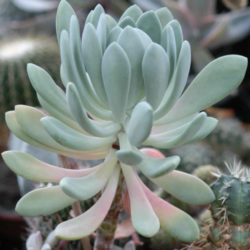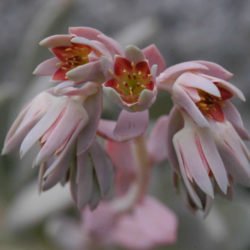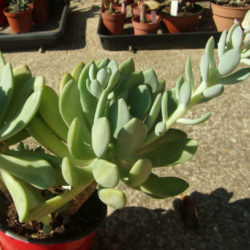Scientific Name
×Pachyveria 'Clavata'
Scientific Classification
Family: Crassulaceae
Subfamily: Sempervivoideae
Tribe: Sedeae
Nothogenus: ×Pachyveria
Description
×Pachyveria 'Clavata' is a beautiful succulent with an upright stem and a rosette of fleshy, gray-green, spoon-shaped leaves at the top. The stem can grow up to 16 inches (40 cm) tall, while the upright leaves can reach up to 4 inches (10 cm) in length and 1.2 inches (3 cm) in width. The old leaves are only slightly powdery and can only slightly change color when exposed to full sun.
The bell-shaped flowers have reddish petals surrounded by fleshy sepals the same color as the leaves. They appear in spring and summer atop stalks that can grow up to 10 inches (25 cm) long, at first upright, later overhanging at the top.
×Pachyveria 'Clavata' is often mislabeled as ×Pachyveria 'Clavifolia' and sometimes confused with ×Pachyveria 'Scheideckeri' because of their similar appearance in young plants.
Origin
×Pachyveria 'Clavata' is an intergeneric hybrid that results from a cross between Pachyphytum bracteosum and unknown Echeveria. The origin is unknown.

Hardiness
USDA hardiness zone 9a to 11b: from 20 °F (−6.7 °C) to 50 °F (+10 °C).
How to Grow and Care
Pachyphytum will not tolerate frosts well. Temperatures below 20 °F (-6 °C) will kill the plant, and temperatures that may go below 45 °F (7 °C) during the extended period should be avoided. Pachyphytum tolerates high heat and intense sunlight. As with most Crassulaceae, Pachyphytum can tolerate (and even appreciate) poor soil conditions, so long as it is well-draining. Pachyphytum can thrive in full or partial sunlight.
Allow the soil to dry out completely before watering, and avoid getting water on the leaves. The plants will require more water in winter as winter begins its active growth season. If you are unsure when to water your Pachyphytum, watch the lowermost leaves for signs of drying and water them then. Pachyphytum is FAR more likely to survive under-watering than over-watering. The thick fleshy leaves will appear wilted and slightly "under-full" when they need water.
Leaf-cutting entails cutting a young leaf from near the center of the rosette. Leave the leaves out in the open air for a day to allow the wound to callous over.
See more at How to Grow and Care for Pachyphytum.
Links
- Back to nothogenus ×Pachyveria
- Succupedia: Browse succulents by Scientific Name, Common Name, Genus, Family, USDA Hardiness Zone, Origin, or cacti by Genus
Photo Gallery
Click on a photo to see a larger version.


